| A dynamometer is an apparatus that measures
mechanical force, speed, or power. In a typical engine/dynamometer test
cell, the end of the engine crank shaft is coupled to the dynamometer via
couplings and a drive shaft. When the engine is running, the dynamometer can
exert a braking force on the engine. Sensors on the dynamometer measure
engine speed and torque. Knowing these values, the dynamometer can calculate
engine-power output. Dynamometers allow us to reproduce a desired speed or
torque for a test under controlled conditions.
Motor and engine testing dynamometers apply
braking or drag resistance to motor rotation, and measure torque at various
speeds and power input levels. These devices measure the output torque of
motors, engines, gearboxes, transmissions, and other rotary machines.
|
Dynamometers use different methods to induce a braking force on the
device under test. Generally we can classify the Dynamometers into
four types:
What exactly are the benefits of different dynamometers? The
following chart describes the benefits of water brakes, Eddy Current,
AC, and DC dynamometers.
Hydraulic |
Eddy Current| DC
Dynamometer | AC
Dynamometer
|
Features
|
Water Brake
|
Eddy Current
|
DC
|
AC
|
|
Motoring ability |
No |
No |
Yes |
Yes |
|
Inertia |
Low |
Varies |
High |
Low |
|
Control stability |
Low |
Good |
Very
Good |
Excellent |
|
Speed
capability |
High |
High |
Moderate |
High |
|
Power
line regeneration |
No |
No |
Yes |
Yes |
|
Control response |
Slow |
Moderate |
Fast |
Fastest |
|
Cooling requirements |
High |
High |
Low |
Low |
|
Electrical requirements |
None |
Low |
High |
High |
|
Technology |
Old |
Old |
Old |
New |
|
Power
Range |
High |
High |
Moderate |
Moderate |
Friction Dynamometers
|
In a prony or friction brake
dynamometer the braking mechanism uses friction pads or brake shoes
to engage the rotating disk or drum coupled to the motor. Sometimes,
the dynamometer uses a rope or a belt that is wound around the
flywheel of the engine. One end of the belt is attached to a spring
balance whose other end is fixed to the ground. the other end of the
belt is attached to a load hanger that suspends freely. when the
load is to be changed load is added to the hanger or it is taken out
of it. The braking torque can then be calculated as the product of
the net force on the brake and the load arm. Brake power can then
easily be calculated by the formula:
b.p. = (2 π N T)/60 (in KW)
|
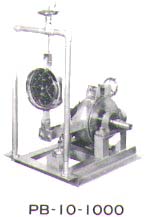
Prony brake
dynamometer |
Hydraulic Dynamometers
(Water
Brake Dynamometer)
|
In a hydraulic or water brake
dynamometer, braking drag is applied to the dynamometer rotor vanes
via water circulating between the rotor and the stator housing.
A hydraulic or a water brake is a
bladed rotor that churns water inside the dynamometer housing. The
more water inside, the greater the braking force exerted on the
device under test.
|
Advantages
|
Disadvantages
|
|
|
-
Difficult to control
-
High maintenance
|
|
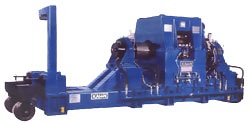
A hydraulic dynamometer
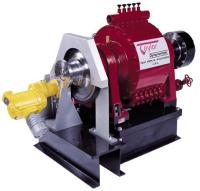
Taylor's
dynamometer water brake |
Visit SACMoney.Com for Money...
Success... Revenue!!!
Electrical
Dynamometers
a.
Eddy Current Dynamometer
An Eddy Current dynamometer produces braking torque using the
principle of eddy currents induced in a rotating metallic disk, immersed
in a magnetic field.
|
Advantages
|
Disadvantages
|
-
Low maintenance
-
Precise control
-
Widely accepted in the automotive industry
|
-
High inertia
-
More expensive
|
|
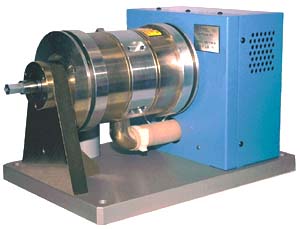
An
eddy current dynamometer |
b.
DC Dynamometer
|
A DC dynamometer is a DC motor that has been trunnion mounted. DC
dynamometers are essentially DC motors mounted and configured to provide
drag against the motor being tested and output the resultant torque and
power.
|
Advantages
|
Disadvantages
|
-
Motors and absorbs
-
Fast response
-
Air cooled (no water required)
-
Line regenerative
|
-
High cost (dynamometer and power amplifier)
-
High inertia
-
Requires high amperage electrical service
|
|

A DC dynamometer |
c.
AC Dynamometer
An AC dynamometer is similar to a DC dynamometer except it uses an AC
motor and is powered by alternating current. AC dynamometers are
essentially AC motors mounted and configured to provide drag against the
motor being tested and output the resultant torque and power.
|
Advantages
|
Disadvantages
|
- Motors and absorbs
- Very low inertia
- Very fast response
- Line regenerative
|
- High cost
- Requires high amperage electrical service
|
|
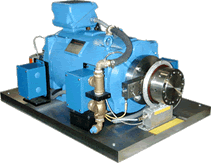
An AC
dynamometer |
|
Electronic Dynamometers
|
Electronic dynamometers are essentially, the electrical
dynamometers, equipped with extensive electronics to measure different
parameters related with the engine quickly with a great precision. These
dynamometers are provided with electronic sensors and transducers that
measure forces and temperature of different parts of the engine and directly
give results in the form of electric pulses. Then these dynamometer
calculate different parameters using a self computer and display them on the
digital screen normally placed on user friendly display panels. Different
parameters like load, etc can be increased or decreased from the panel and
can be set accurately.
|
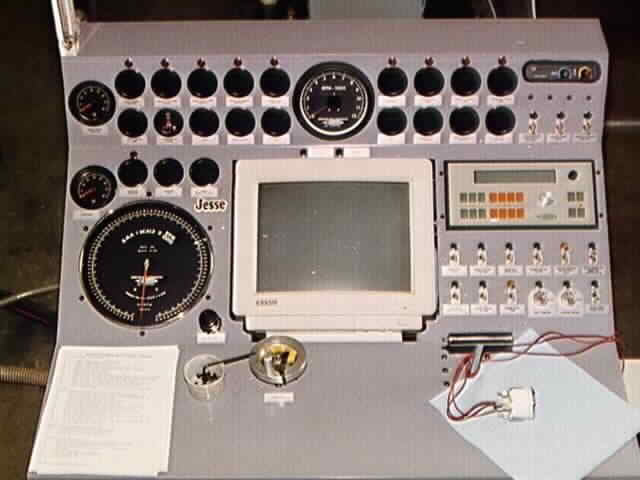
An
electronic Dynamometer console panel |
Visit SACMoney.Com for Money... Success... Revenue!!!
|
APPLICATIONS
Common applications for dynamometers include general
purpose, automotive, aircraft or aerospace, chain or belt drives, gearboxes,
fluid power systems, gas or diesel engines, industrial, marine,
transmissions, and turbines. All dynamometers will typically have speed and
power feedback for performance testing and monitoring. Typical features
include encoders or other speed / position sensors, torque arms, and
reaction sensors. Common dynamometer interfaces include integral control
console, separate console, computer, or modem or remote control. Features
common to dynamometers include PID control, flow control or throttling, data
acquisition or logging, alarms, motor power analysis, and engine exhaust
analysis.
<<Previous
Page
Next Page >> |
![]()